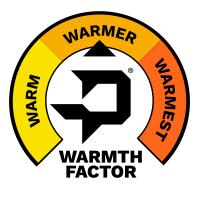
How to Choose the Best Base Layers for Cold Weather
Base layers are designed to keep you warm and comfortable by providing you with an extra layer of insulation while wicking away sweat. Without a proper base layer, sweat builds up and can quickly turn icy cold against your skin if winter air gets under your clothing. Here are a few tips for choosing the right winter base layer to help you stay comfortable, warm, and safe in the frigid outdoors.
Material
When choosing the right material, you need to keep three things in mind: durability, moisture-wicking properties, and odor resistance. However, you may not need to most expensive, heavy-duty fabric for every occasion, so consider the activities you’ll be doing in your base layers. For example, if you’re keen on winter sports or do a lot of outdoor work, you’ll need durable materials that will do an excellent job of wicking away sweat while keeping the stink at bay. For these situations, synthetic materials or merino wool are your best options.
Silk is a perfectly viable option if you won’t be participating in intense activities and need something to add that extra warmth. Many people prefer this material when doing light activities, like going to an outdoor event or a light hike. Keep in mind that it isn’t the most durable material, and if you get your heart rate up, it won’t do much in terms of moisture-wicking or odor resistance.
Weight
Your base layer’s main job is not to insulate you but rather to manage your sweat. Insulation is more of a secondary purpose, but you still need to consider how heavy your base layer is. You can choose from lightweight, midweight, and heavyweight base layers, all designed to provide warmth at a range of temperatures, from cold to freezing. Keep in mind that you may not need heavy materials if you won’t be doing strenuous activity or if it isn’t very cold outside. In fact, wearing too heavy of a base layer will make you uncomfortable.
Fit
Your base layers need to be snug around your legs and torso to optimize their warmth and moisture-wicking abilities. If you’re participating in aerobic activities, you can get away with wearing looser layers, but they should still be relatively close to your skin.
The looser the fabric, the less sweat it will manage. While you may want the circulation, keep in mind how much sweating you’ll be doing. Sweat can be dangerous in freezing temperatures and, in the right conditions, can make you even colder.
Now that you know how to choose the right winter base layers, you might wonder which one suits you best. Do you need a lightweight, relaxed fit or snug, double layers to fight off the cold? Whatever you need, we have the thermal base layers for you at PolarMax.

